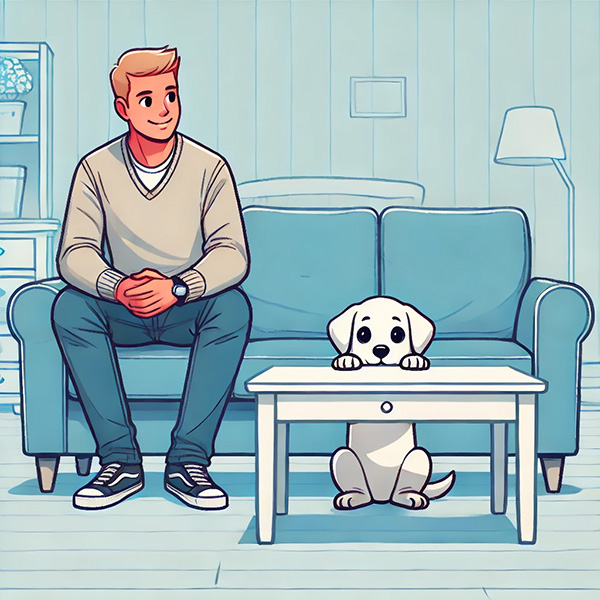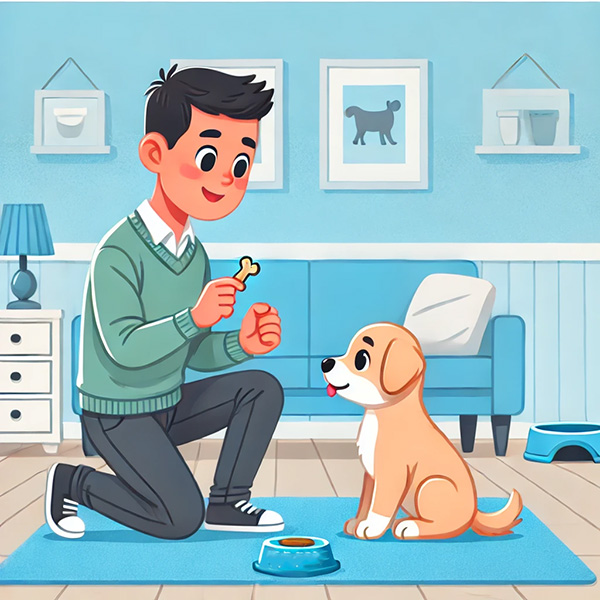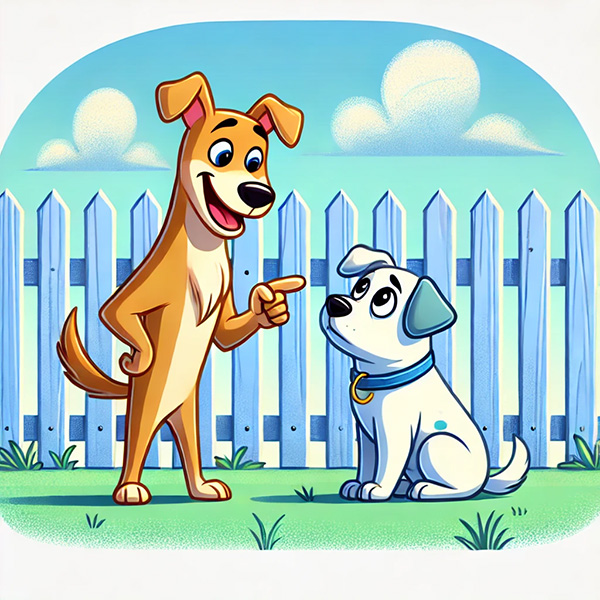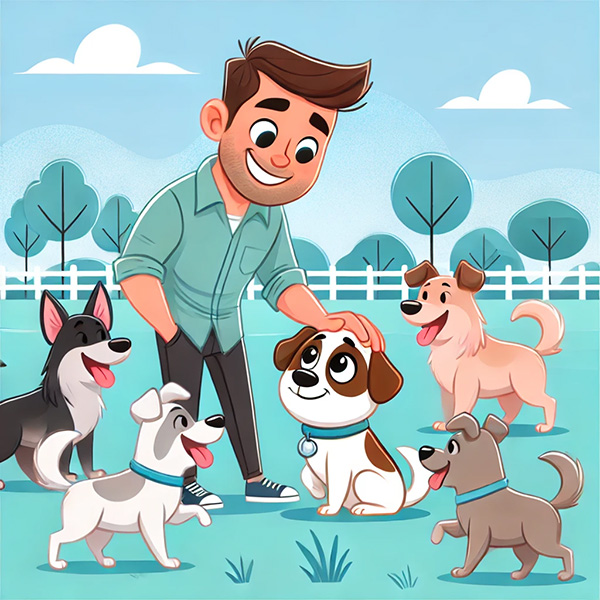Helping shy and scared dogs is crucial for their well-being and happiness, as they often struggle to navigate the world around them. By addressing their fears and anxieties, pet parents can significantly improve their dog's quality of life, making them more relaxed and comfortable in various situations.
This guide provides comprehensive tips and techniques to support pet parents in building their dog's confidence and creating a safe, comforting environment. With the right approach, even the most timid dogs can learn to trust and enjoy their surroundings, leading to a more harmonious and joyful relationship between the pet and their owner.
Understanding Dog Fear and Anxiety
Recognizing signs of fear and anxiety in dogs is the first step in addressing their needs, as early identification allows for timely intervention. Understanding why are dogs shy or introverted more than others is important.
Look for behaviors such as trembling, excessive barking, or hiding, which indicate distress and require immediate attention to prevent escalation. Common triggers for these anxious behaviors include loud noises, unfamiliar environments, and new people or pets, all of which can overwhelm a sensitive dog. By understanding these triggers, pet parents can create a calm and reassuring atmosphere, helping their dogs feel more secure and less stressed in various situations.
11 tips for helping shy and scared dog
Respecting Your Dog’s Emotional State

Avoid forcing a shy dog into fearful situations; instead, let it approach at its own pace, recognizing early anxiety signs. Providing its own space, avoiding eye contact, and using treats can help build confidence. Patience is crucial, especially for a timid or new dog. Gradual exposure to new experiences and other dogs, coupled with positive reinforcement, can help a shy dog overcome fears and lead a happier life.
Creating a Safe Space
Creating a comfortable crate or designated space for your dog provides a sanctuary where they can retreat during overwhelming moments. This quiet, stress-free area is crucial for helping shy dogs feel secure and manage anxiety. Providing treats in this space can further enhance their sense of security and promote positive associations.
Reading Your Dog’s Body Language
Understanding a dog’s body language is key to gauging their comfort level. Look for relaxed postures and soft eyes as indicators of comfort. Relaxed postures, such as a loose tail and an open mouth, suggest the dog feels at ease and safe in their environment. Similarly, soft eyes, which are gentle and not fixed in a stare, indicate that the dog is calm and not feeling threatened. This is especially important for many dogs, including a shy dog, as these signs can help you determine if they are comfortable or stressed.
Approach the shy dog calmly, avoiding direct eye contact and sudden movements. When approaching a timid dog, moving slowly and speaking softly is important, as well as allowing the dog to come to you at its own pace. This method helps build trust and reduces the dog's anxiety, making it easier for them to interact without fear. This approach works well with shy dogs and fearful dogs that may take a little while to warm up. Treats as positive reinforcement can also help create a positive association and make the process more enjoyable for the dog.
Gradual Exposure and Desensitization
Desensitization and counter-conditioning techniques involve gradual exposure to fear triggers. Start with low-intensity versions of the trigger and slowly increase exposure, always at the dog’s pace, to build tolerance and confidence. For instance, if a dog is anxious around other dogs, you could start by introducing it to another dog from afar and slowly decrease the distance as the dog grows more at ease. This process should be paired with positive reinforcement, like giving the dog treats, to help them positively associate with the trigger.
The same process can be used for other fear triggers, like loud noises or new environments. By consistently pairing these situations with positive experiences, such as treats or playtime, the dog starts associating the triggers with positive results. This approach helps to reduce the dog’s anxiety and build their confidence over time. Training a fearful dog using these methods can be a bit difficult at first, but with patience and consistency, the dog will start to show improvement. It's important to avoid eye contact and sudden movements when working with a nervous or timid dog, as these actions can increase their anxiety. Instead, focus on creating a calm, positive environment to help the dog feel secure.
Building Confidence Through Training

Basic obedience training commands, like sit and stay, provide structure and confidence for shy dogs. These commands provide clear guidelines and assist timid dogs in understanding what is expected, which can help alleviate their anxiety. Positive reinforcement, such as treats and praise, promotes desired behaviors and makes training more enjoyable for the dog and the trainer. For instance, when a dog successfully follows the sit command, rewarding it with a treat reinforces the behavior and builds its confidence.
Consistency and patience are essential in training, particularly for anxious or timid dogs. Regular practice and repetition help reinforce the commands, while patience ensures that the dog feels supported and not pressured. Over time, this method helps boost the dog's confidence and reinforces the bond between the dog and the trainer. For example, incorporating short training sessions into daily walks or playtime can reinforce the commands and make the process more engaging for the dog. Providing a comfortable space, like the dog's crate, can also help create a safe environment for learning and practice.
Avoiding Common Mistakes
Avoid forcing eye contact or exposing dogs to loud environments, as these can heighten anxiety. Forcing a dog to make eye contact can be perceived as a threat, making the dog more nervous and scared. Instead, let the dog approach you at their own pace, which helps them feel more secure and in control. This approach is particularly important when dealing with dogs that are naturally shy, as they may require more patience and understanding.
Steer clear of sudden movements and loud noises that may startle the dog, worsening their fear. Loud environments can be distressing for a dog, leading to increased stress and anxiety. Creating a calm and quiet space, such as the dog's crate, can provide a safe haven where the dog feels secure and can relax. When a dog exhibits signs of stress, it is important to give them time and space to relax. Providing treats and positive reinforcement can also help make their environment more comfortable.
Utilizing Doggie Mentors

Confident dogs can serve as mentors, helping shy dogs through positive interactions. When a dog approaches another calmly and assuredly, it sets a positive example, encouraging the more timid dog to explore and engage. This mentorship can be particularly effective during walks or playtime, where the confident dog's behavior reassures the shy dog that the environment is safe and fun. Watching a confident dog successfully navigate new situations can teach a shy dog valuable social skills without worrying about feeling threatened.
Other pets in the household can aid in socialization, offering companionship and reducing isolation. A confident dog, or even a playful puppy, can show a shy dog that the house is a secure and friendly place. These interactions provide the shy dog with a friend and teach them that socializing with other animals and people can be enjoyable and rewarding. This socialization process can involve playing, waiting patiently during walks, and sharing treats, all of which contribute to a more confident and happy dog.
Routine and Predictability
A predictable daily routine provides stability and reduces anxiety in dogs. Regular feeding, walking, and playtime schedules create a sense of security and structure. This consistency helps dogs know what to expect, reducing their stress levels and making them feel more at ease in their environment. Establishing a routine can greatly improve the comfort and confidence of shy or nervous dogs.
Consistent routines are especially beneficial for puppies and shy dogs, who may feel overwhelmed by unpredictable changes. When dogs approach their daily activities with familiarity, they relax and enjoy their time more. Regular activities such as walks and play sessions offer physical exercise, mental stimulation, and opportunities for bonding. Pet parents can create a stable and reassuring atmosphere for their dogs by maintaining a predictable schedule.
Safe Socialization Techniques

Gradually introduce new people and pets to your dog, ensuring each encounter is positive. Begin by letting the dog observe from a distance and slowly reduce the distance as the dog becomes more comfortable. Offering a treat or engaging in a fun activity can help create positive associations with the new individual. It's important to closely monitor the dog's body language and provide reassurance to avoid any signs of stress.
Utilize safe spaces during social interactions, allowing the dog to retreat if it feels overwhelmed. A designated room or a familiar area where the dog feels secure can be very beneficial. If the dog starts to show signs of being worried or anxious, let it retreat to its safe space without forcing interaction. This helps build the dog's confidence over time and teaches it that it has control over its environment.
Professional Help and Resources
If necessary, seek assistance from professional trainers or behaviorists. They offer expertise and tailored strategies for managing fear and anxiety. Recommended resources include books, websites, and support groups for additional guidance. These resources provide valuable insights, tips, and support for managing a dog's anxiety.
Positive Reinforcement Techniques
Effective use of treats and toys encourages desired behaviors. When a dog performs a positive action, rewarding it with a treat or a toy can reinforce this behavior, making it more likely that the dog will repeat it.
